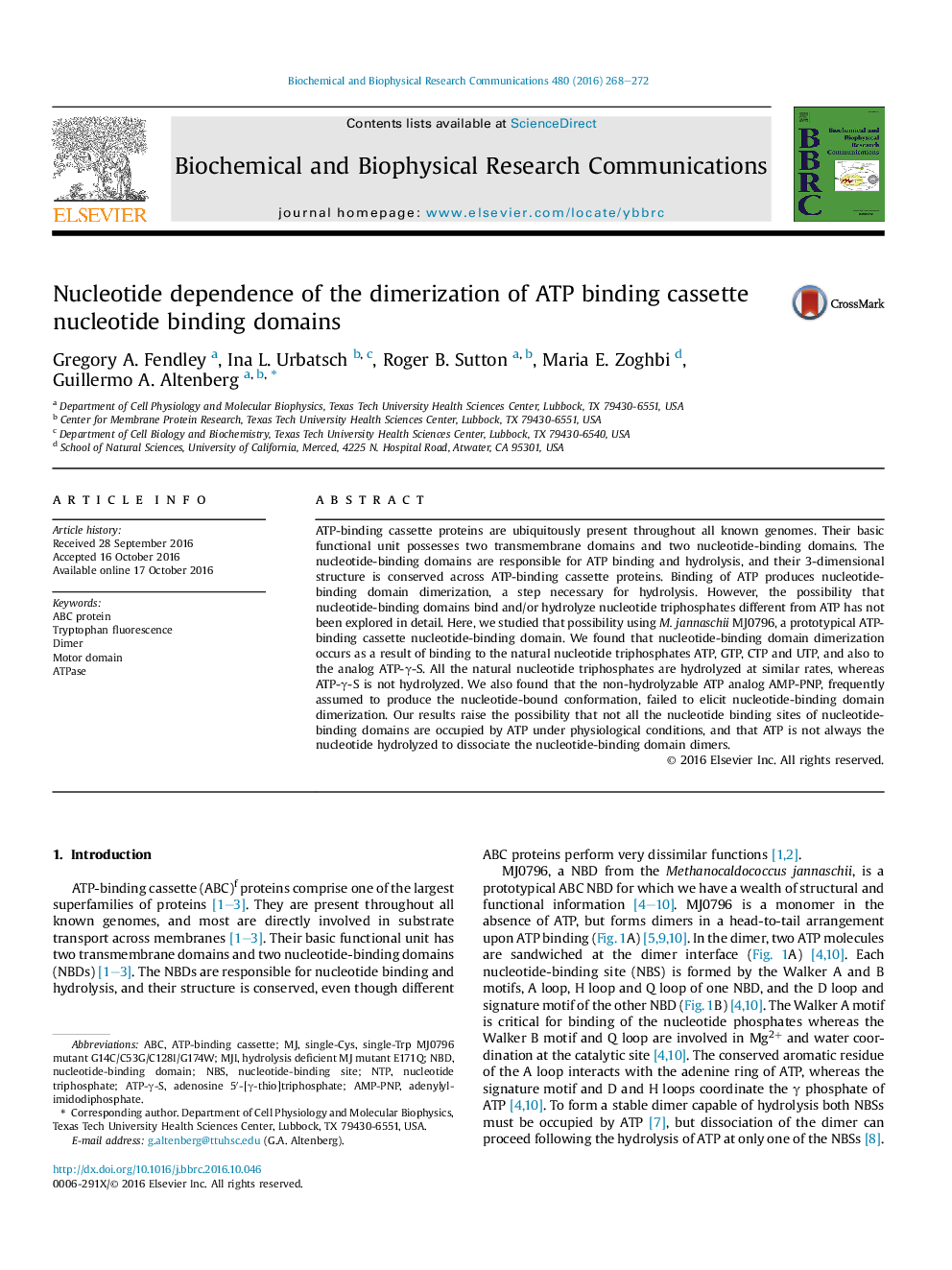| کد مقاله | کد نشریه | سال انتشار | مقاله انگلیسی | نسخه تمام متن |
|---|---|---|---|---|
| 5506682 | 1400301 | 2016 | 5 صفحه PDF | دانلود رایگان |
عنوان انگلیسی مقاله ISI
Nucleotide dependence of the dimerization of ATP binding cassette nucleotide binding domains
دانلود مقاله + سفارش ترجمه
دانلود مقاله ISI انگلیسی
رایگان برای ایرانیان
کلمات کلیدی
ATP-γ-SNTPNBSNBDAMP-PNPABCadenylyl-imidodiphosphateadenosine 5′-[γ-thio]triphosphate - آدنوزین 5 '- [γ-تیو] تری فسفاتATPase - ایتیپیایزها nucleotide triphosphate - تری فسفات نوکلئوتیدیnucleotide-binding domain - دامنه اتصال دهنده نوکلئوتیدیmotor domain - دامنه موتورDimer - دیمرnucleotide-binding site - سایت پیوند نوکلئوتیدیTryptophan fluorescence - فلورسانس تریپتوفانABC protein - پروتئین ABCATP-binding cassette - کیت اتصال به ATP
موضوعات مرتبط
علوم زیستی و بیوفناوری
بیوشیمی، ژنتیک و زیست شناسی مولکولی
زیست شیمی
پیش نمایش صفحه اول مقاله

چکیده انگلیسی
ATP-binding cassette proteins are ubiquitously present throughout all known genomes. Their basic functional unit possesses two transmembrane domains and two nucleotide-binding domains. The nucleotide-binding domains are responsible for ATP binding and hydrolysis, and their 3-dimensional structure is conserved across ATP-binding cassette proteins. Binding of ATP produces nucleotide-binding domain dimerization, a step necessary for hydrolysis. However, the possibility that nucleotide-binding domains bind and/or hydrolyze nucleotide triphosphates different from ATP has not been explored in detail. Here, we studied that possibility using M. jannaschii MJ0796, a prototypical ATP-binding cassette nucleotide-binding domain. We found that nucleotide-binding domain dimerization occurs as a result of binding to the natural nucleotide triphosphates ATP, GTP, CTP and UTP, and also to the analog ATP-γ-S. All the natural nucleotide triphosphates are hydrolyzed at similar rates, whereas ATP-γ-S is not hydrolyzed. We also found that the non-hydrolyzable ATP analog AMP-PNP, frequently assumed to produce the nucleotide-bound conformation, failed to elicit nucleotide-binding domain dimerization. Our results raise the possibility that not all the nucleotide binding sites of nucleotide-binding domains are occupied by ATP under physiological conditions, and that ATP is not always the nucleotide hydrolyzed to dissociate the nucleotide-binding domain dimers.
ناشر
Database: Elsevier - ScienceDirect (ساینس دایرکت)
Journal: Biochemical and Biophysical Research Communications - Volume 480, Issue 2, 11 November 2016, Pages 268-272
Journal: Biochemical and Biophysical Research Communications - Volume 480, Issue 2, 11 November 2016, Pages 268-272
نویسندگان
Gregory A. Fendley, Ina L. Urbatsch, Roger B. Sutton, Maria E. Zoghbi, Guillermo A. Altenberg,